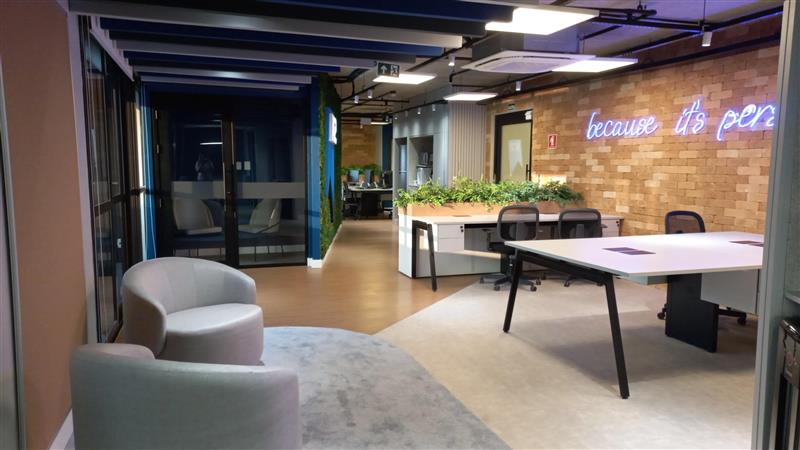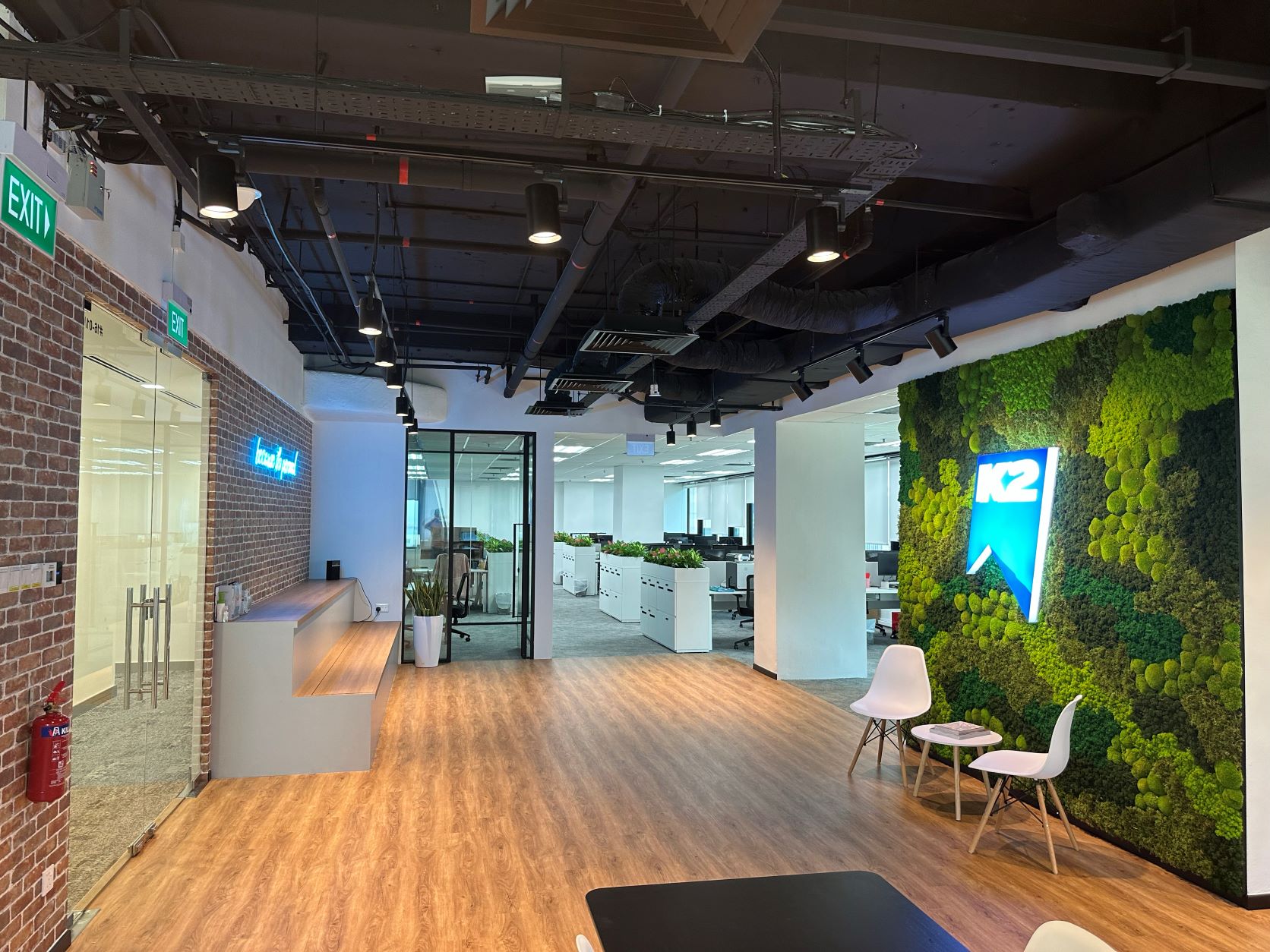What is an engaging office?
Above all, an engaging office is one which embodies brand values. You step into the office and you get an immediate sense of that company’s character. The atmosphere, the style, the use of space, the ambient noise… All of these combine to provide you with a visual and sensory statement of what the company stands for.
Often, an engaging office will incorporate a number of different zones, each of which supports a different mode of working. These include focus areas, collaborative spaces, private meeting rooms and zones which encourage socialisation. The latter is particularly important, as interior design company Thirdway explains: “Having a social zone where colleagues can eat and drink together is such a simple piece of workplace design that creates a social glue, humanising the work atmosphere, generating strong bonds and improving workplace happiness. Stronger relationships with team members and a happier workforce means people are more inspired to get their teeth stuck in at work.” Each of K2’s new offices has a social zone which includes a large table to congregate around, comfortable chairs/sofas to relax on, and a range of food and drink making/preparation facilities. The zones act as a focal point within the offices, bringing people together and encouraging them to start conversations and share ideas.
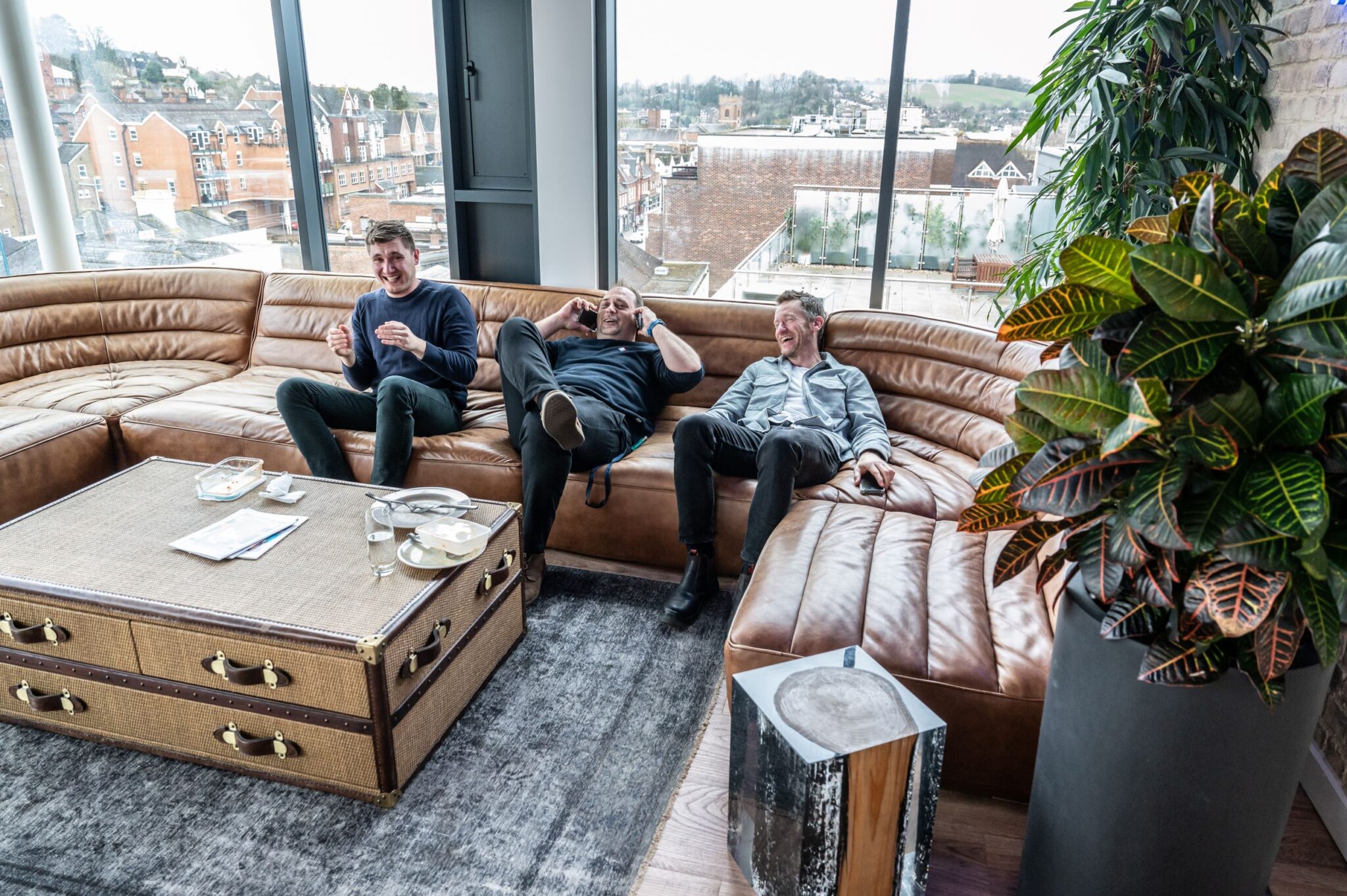
Studies have shown that there is a direct correlation between our productivity and our engagement with the natural world, thus biophilic design tends to feature in any engaging office. Design elements include plants, green walls, natural shapes, natural patterns and natural light. When combined, these elements can lower stress levels, reduce sick days and absenteeism, create cleaner air, and boost creativity. Productivity also benefits: a study by Exeter University showed that employees’ productivity increased by 15% when plants were introduced into their workplaces. Biophilia is a defining characteristic of K2’s new offices, with their design maximising the capture of natural light and with plants acting as natural dividers between the desks.
For most of its history (and it’s a long history – the first recorded use of the term ‘office’ was in 1395!), the office has been perceived as a place that you have to go to in order to work. Today, an engaging office is more than just a place; it is an experience, a destination where employees want to spend their working day. It needs to be “a lighthouse for culture and values, and an attractive place to be”; “Work can no longer be regarded as just a place or a process – it must be an experience that attracts people back to the office and makes them feel the commute to work has been worth it!” (Momcilo Pavlovic, Workplace Support Leader, IKEA) Given that last year, K2 was accredited as a Great Place To Work®, we are confident that we are on the right track when it comes to providing a compelling office experience. According to survey results, 91% of our people feel that K2 is a psychologically and emotionally healthy place to work; 92% look forward to coming to work here; and 97% are proud to tell others that they work here.
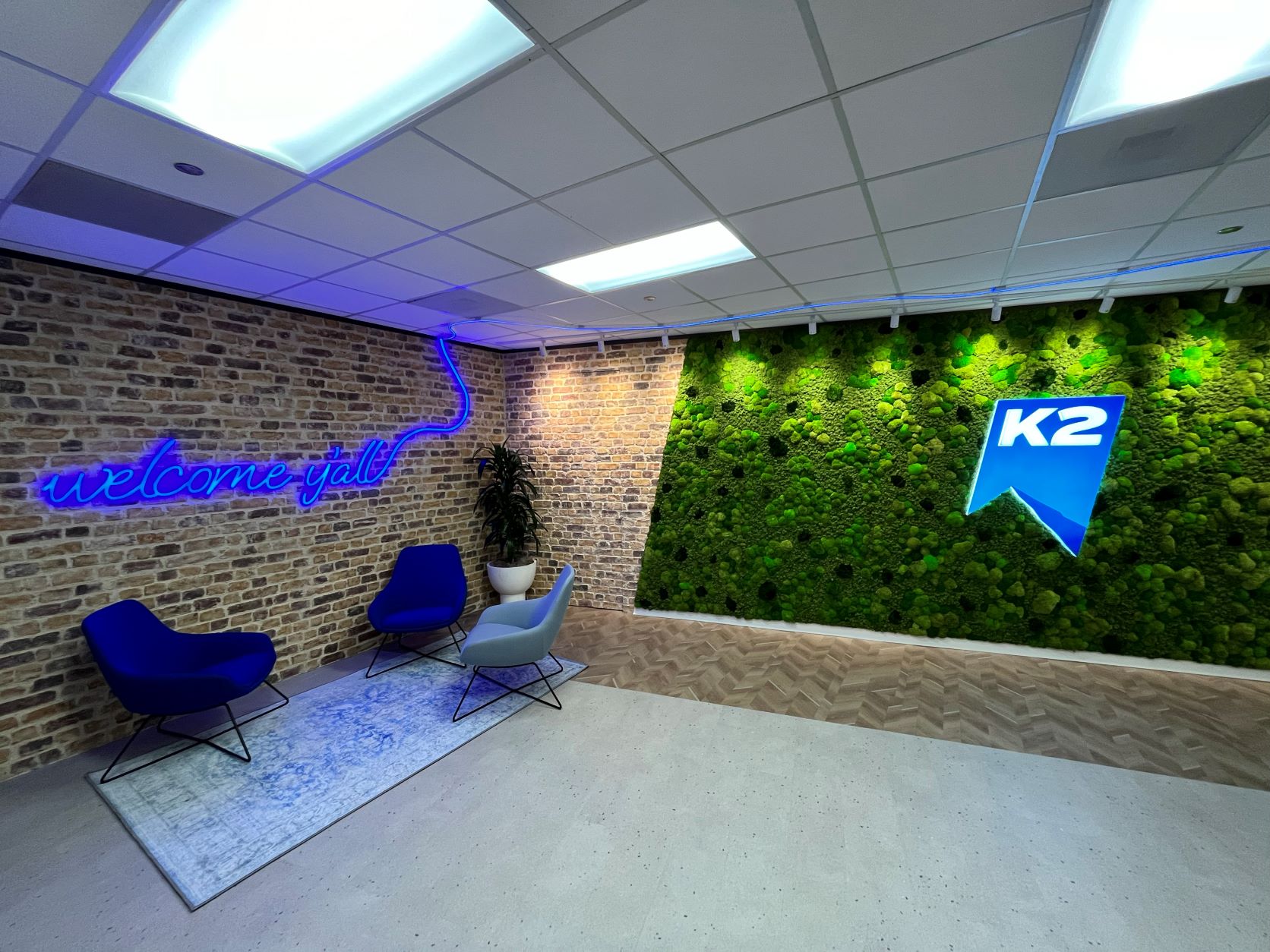
How does an engaging office boost culture?
By embodying a company’s culture, an engaging office ensures that employees are subliminally engaging with the company’s core values throughout the working day. An office which greets those arriving with a light box used to recognise employee achievements is home to a company that places huge value on people and culture. Similarly, an office which draws people towards multiple collaborative spaces likely belongs to a company whose brand is built around inspiration and creativity.
An engaging office increases employees’ happiness, a key component of a strong culture. Research shows that companies with happy employees outperform the competition by 20%. Happy employees are 12% more productive and take 10 times fewer sick days than unhappy employees, plus 36% of employees would sacrifice $5,000 a year in salary to be happier at work. Furthermore, 56% of employees would turn down a job offer if they weren’t happy with the working environment, and 73% of employees cite the office as having significant influence on job satisfaction.
Company culture is not a static thing. It needs to continuously evolve, to be enriched by creativity and innovation, both of which can be inspired by an engaging office. In the end, embodiment of brand values, recognition of different modes of working, biophilic design and substituting place for experience all boil down to a single, simple truth: creative space encourages creativity.
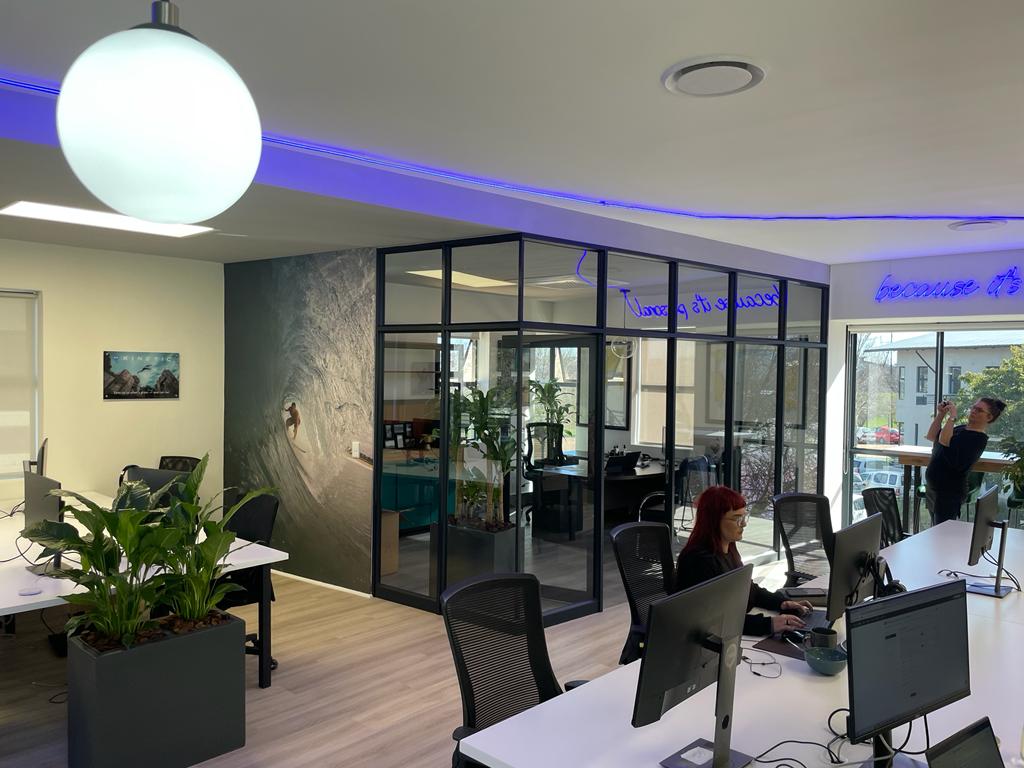
How does an engaging office boost brand engagement?
An engaging office brings brand values to life, encouraging and enabling employees to live the brand. Do more than “Let your space tell your story” (Thirdway); let your space be your story, one that grows and evolves with you. The concept of this might sound overwhelming, but not every element of your office design need be a loud and definitive part of the narrative. Subtle nods to aspects of your brand – such as multiple elements within K2’s UK office being positioned at a twelve-degree angle to mirror the twelve-degree slant of the company’s logo – are often more effective.
If an office is engaging, employees will want to spend more time there, thus increasing their exposure to the company’s brand. Pre-Pandemic, hybrid working was largely an ideal; today, it is an expectation. Research justifies this expectation by revealing that 57% of companies which adopted a hybrid model during the Pandemic surpassed their targets over a twelve month period because of it. An office is no longer the only destination, and because of this, it has to work hard to become the destination of choice. As Oktra, the UK’s leading office design and fit out company explains, “as the way we work continues to evolve, companies that create a positive workplace experience will be at an advantage in the race for top talent. The future belongs to those who put the employee experience at the heart of their workplace design.”
If employees have a consistently positive workplace experience, they are more likely to engage with their company’s brand outside of work. Social media has a key role to play here. People use platforms such as Instagram and Twitter to share their experiences, and if their office is engaging enough to provide them with an experience, to be a destination, then it is also something worth posting about. In this way, employees play a part in marketing a company’s brand, exposing it to engagement from external sources.
